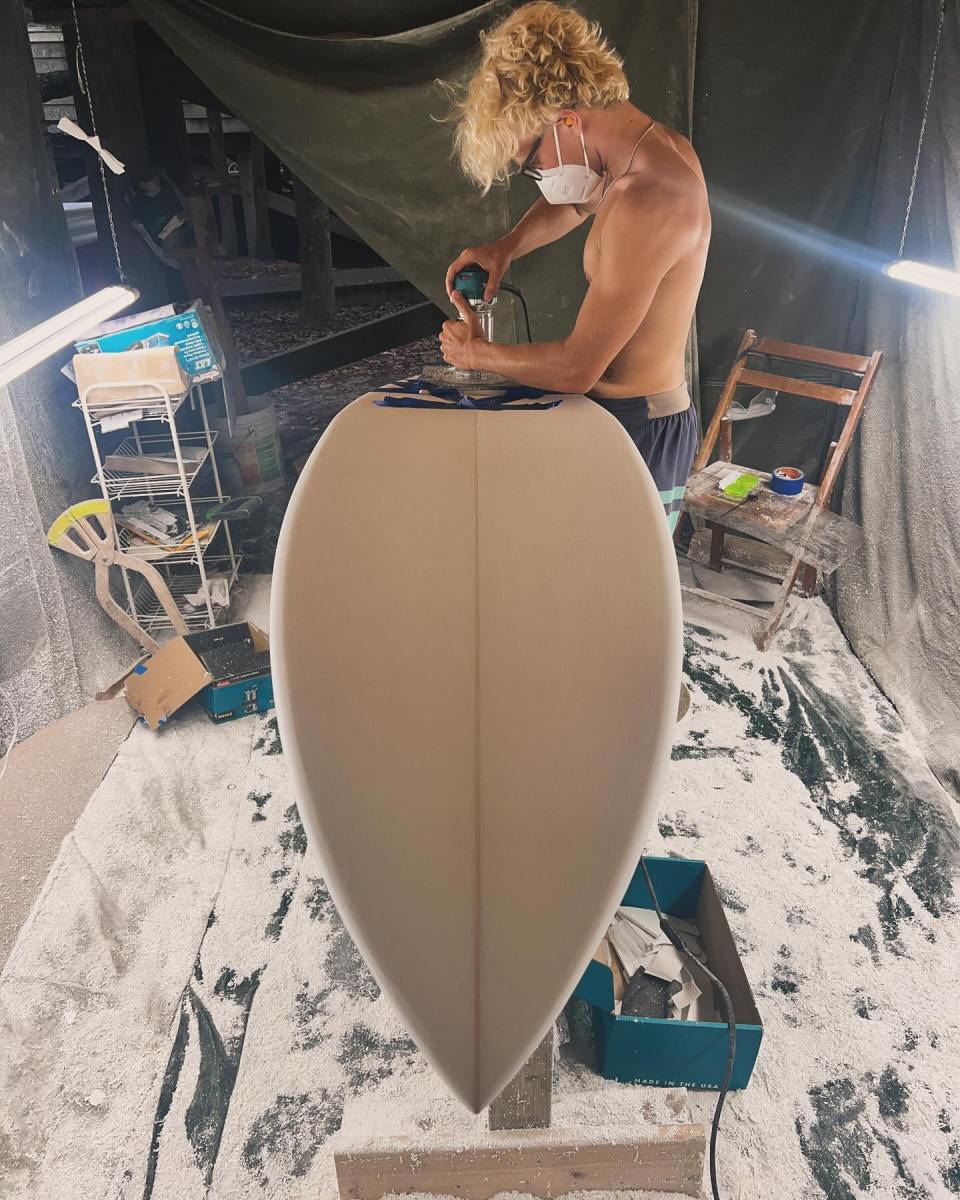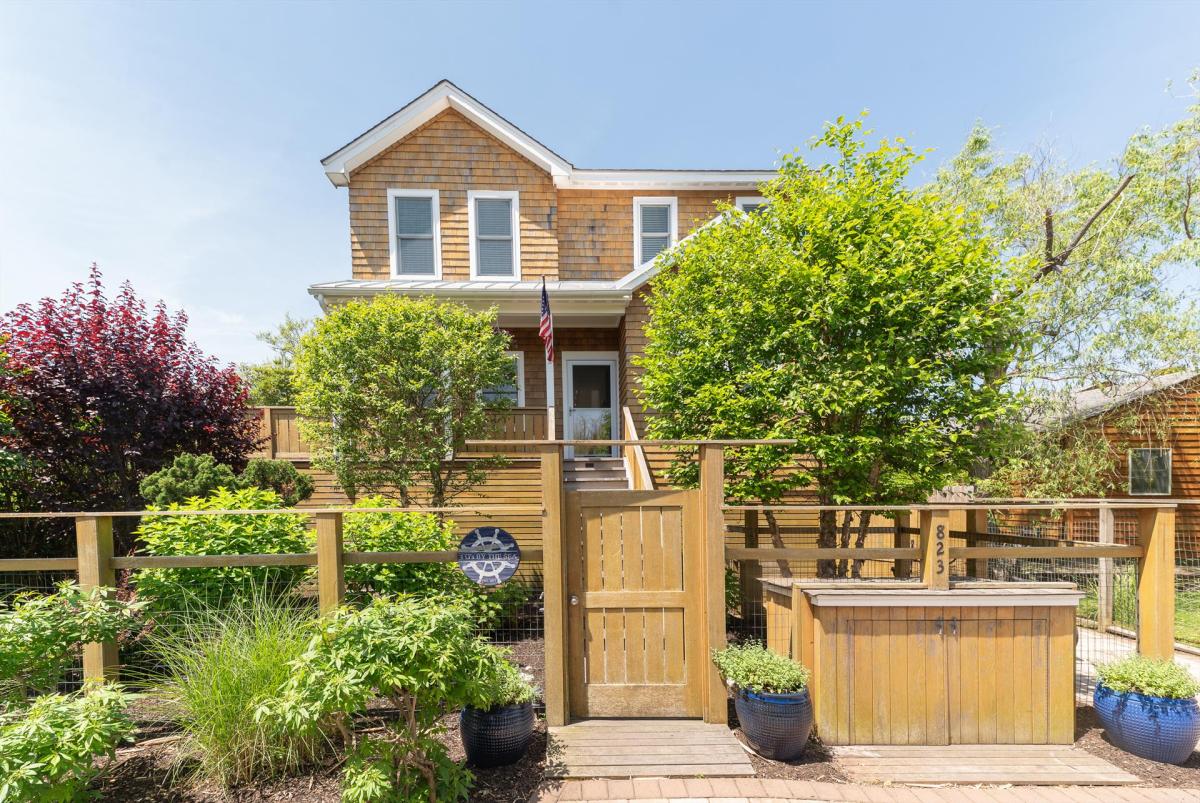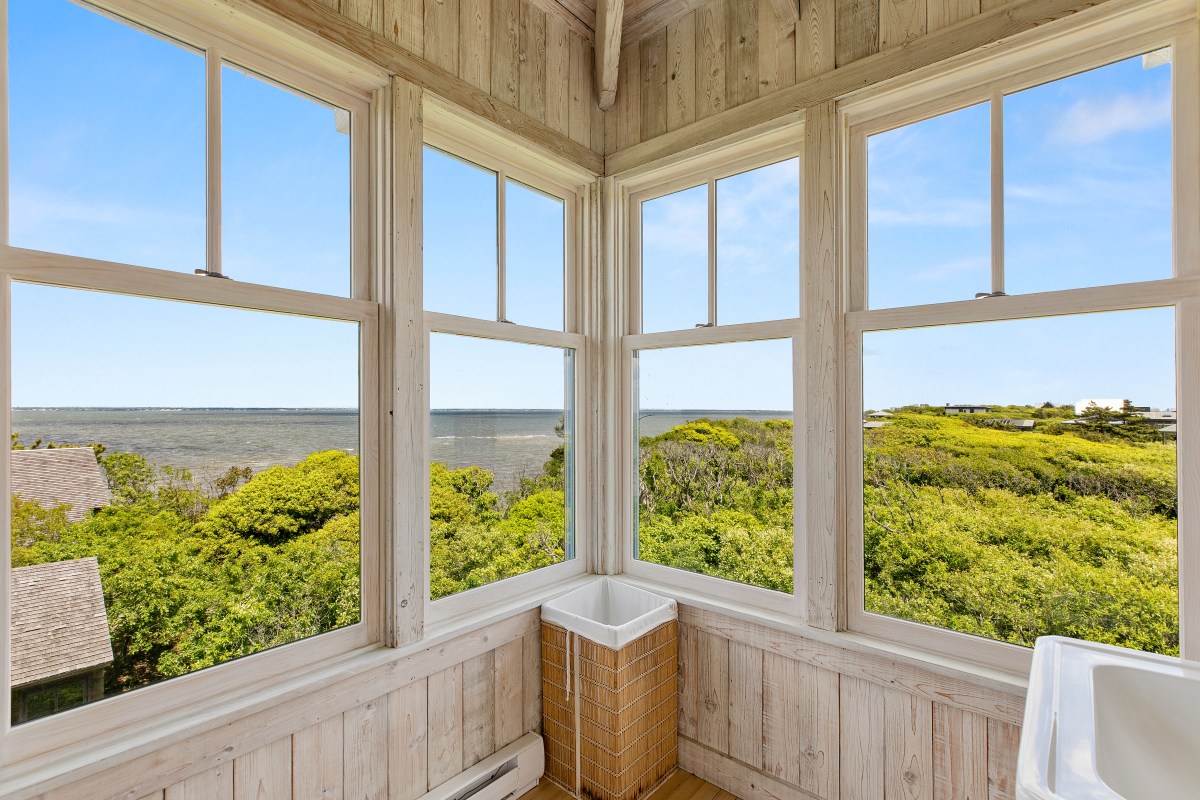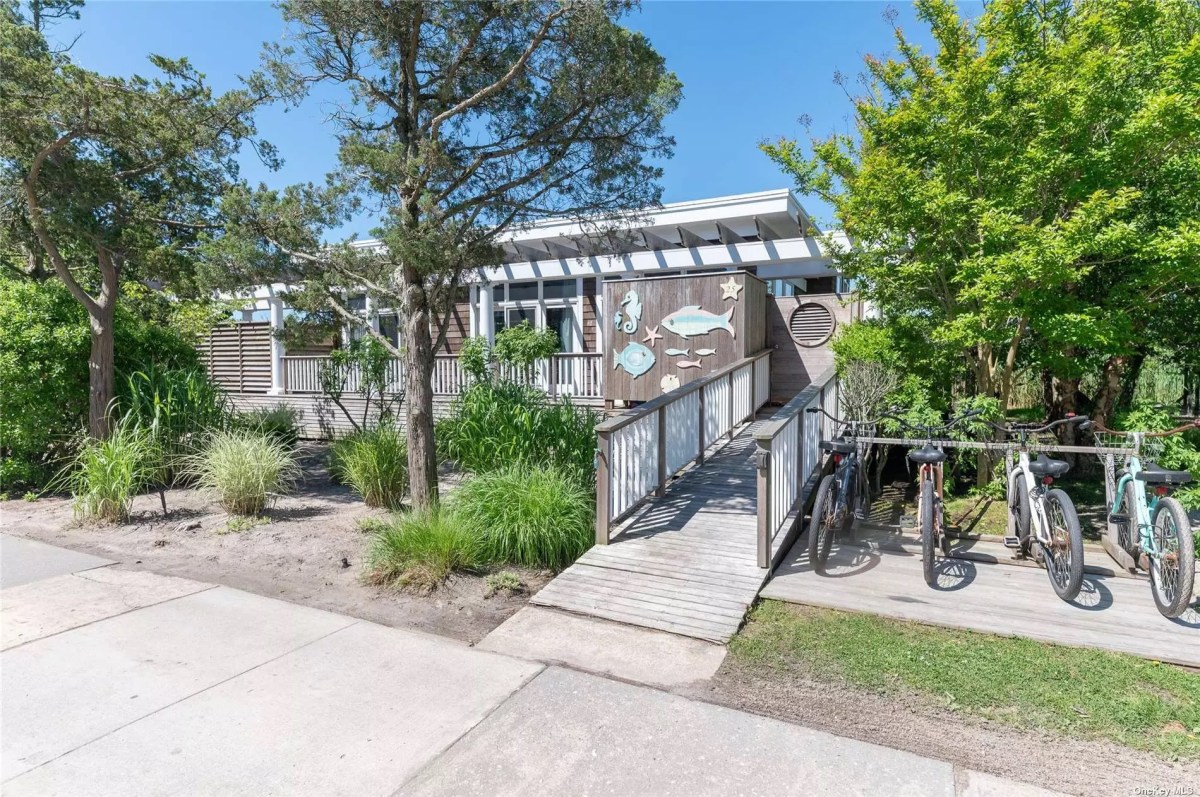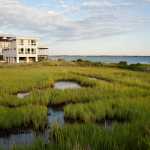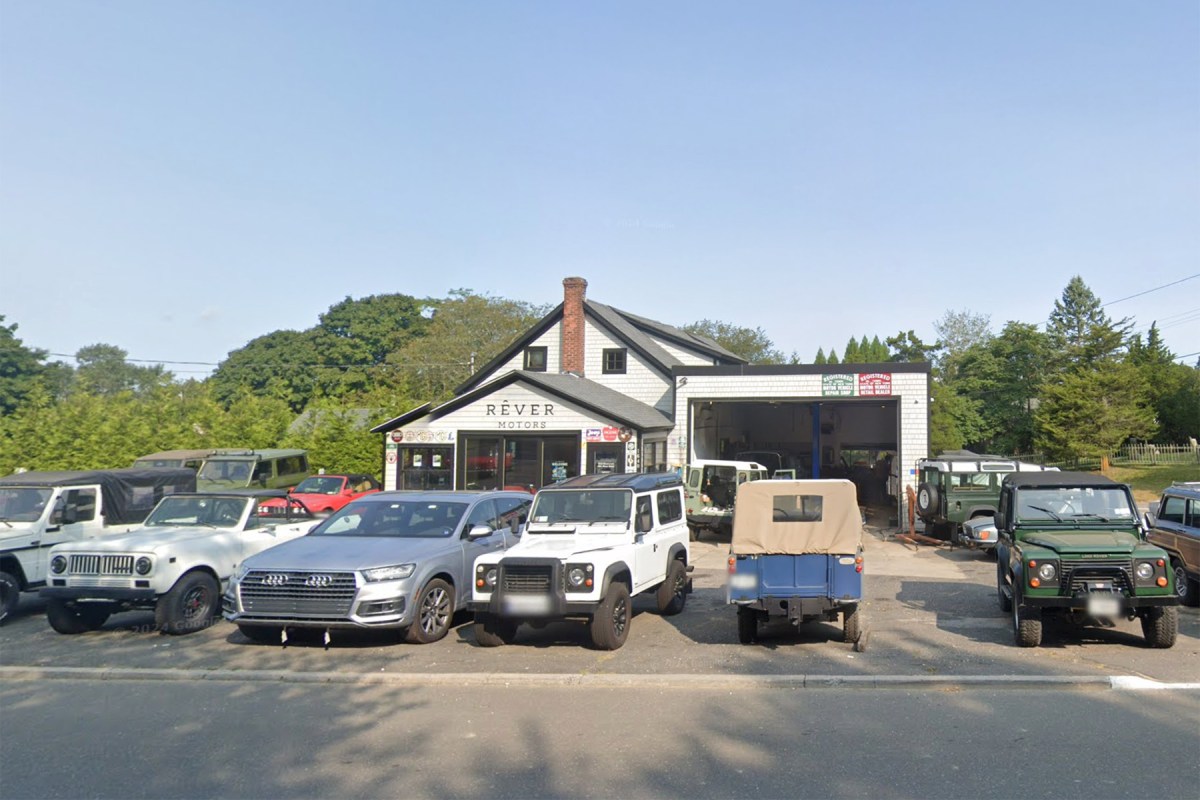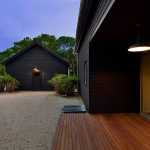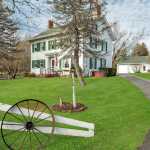On a recent Wednesday, Billy Reardon, a retired carpenter, hit the button to open his garage door and walked into his workshop. His gray Jeep was parked on the street and his white Toyota pickup was in the driveway, but the garage was packed. Reardon pointed out his first wood sculpture, a reindeer he made decades ago, a few wood rabbits and a few wheelbarrows. But the usual tables, chairs and furniture were absent. The garage instead was filled with a forest of six-inch by eight-inch birdhouses, suspended and on shelves, as if waiting for a flock to land and find new homes.
“Forty years of experience, that’s what it is. I’m a master carpenter,” he said. “I built two houses in my life. I’ve done a lot of extensions, dormers. And now I enjoy this. It’s easy compared to what I’m used to doing. And it gives me a lot of joy.”
Reardon, who can be found on Instagram using the handle @birdhousebill631, designs and builds beautiful birdhouses that he sells directly and at craft shows. He has a following and an Instagram, but no website for no reason beyond a dislike of the digital world.
“It’s only me. I would be out of business,” Reardon said in the garage of his Centereach house. “They would sell out in two seconds.”
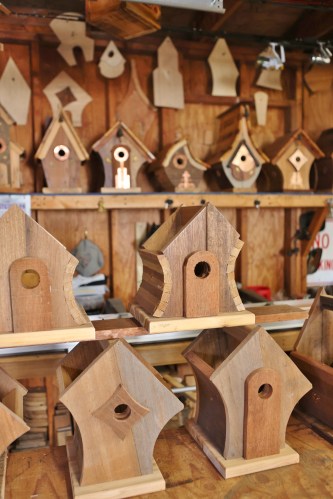
Belmont Bill
Although Reardon has been doing woodwork on the side for years, five years ago, he retired after decades as a member of the Long Island Carpenters union, doing mostly commercial work, including 16 years at Belmont racetrack as one of the head carpenters. He built new barns, cottages for people working and did other carpentry.
“It’s 440 acres, so there’s a lot to do there,” he said. “Money comes in from the racino.”
But his ability and affection for birdhouses started long before Belmont, as he found meaning and a mission in this material.
“I always liked working with wood,” he said. “When I was younger, a friend asked if I could help him install an air conditioner for fifty dollars.”
He worked for a home improvement company initially for $25 a day, inserting wood putty and then working on siding, decks, dormers and extensions.
“I got a lot of experience with that,” he said, noting he became dissatisfied with the pay. “A friend said I could get into the union. I got into the union. I didn’t have to go through the apprenticeship.”
He did metal framing, concrete, sheetrock, dropped ceilings, even helped build the raised level at Roosevelt Field mall. “We put the second story on at night,” he said. “I was getting well rounded in my career. I did home improvement. Now I did the commercial end.”
It was, he said, grueling physical labor, which he liked and worked hard at, but it took its toll over time.
“I wouldn’t choose that career again. Every day, you got to produce,” he said. “They think you’re a rechargeable battery. If you don’t work hard, there’s somebody to replace you. I was always a hard worker.”
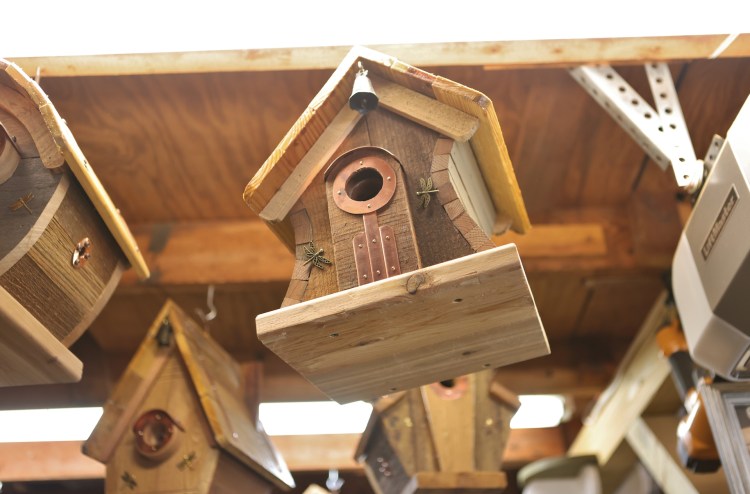
Reclaiming Wood
He then began working at Belmont, while also doing other woodwork, transforming extra wood Belmont would throw away into beautiful objects. “I started making planters, wine racks, Santa Clauses, witches,” he said. “I made all sorts of things.”
He “was good at freehanding, drawing” and studied drafting in high school, so he began designing and building objects he sold for $25 to $50 at craft shows. After he retired from Belmont and the pandemic hit, he began to look at ways to make objects he could sell for more.
“I started to think bigger. During the pandemic, I thought, let me start doing something,” he said. “I started drawing birdhouses.”
Where did the idea for birdhouses come from? Did he see a beautiful bird land on a branch or wheel its way through the sky on outstretched wings? He doesn’t remember a “Eureka” moment, but during the pandemic, he began building birdhouses.
“I always knew I wanted to make something. I’m a metal mechanic,” he said. “I put all my skills together and came up with birdhouses.”
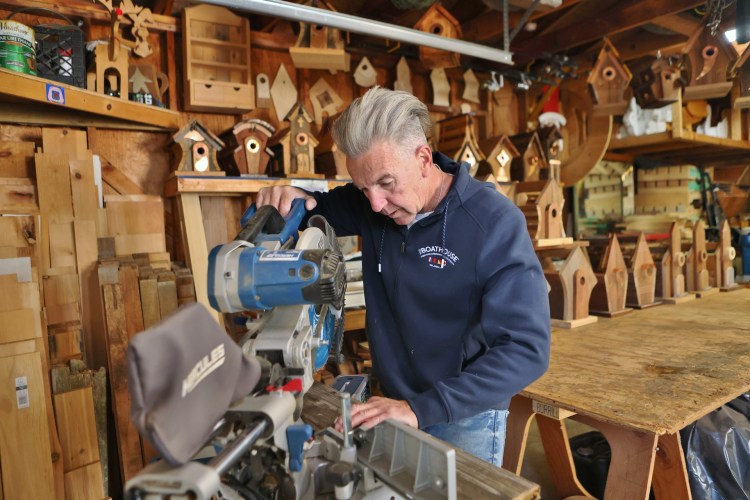
Good Wood
As he strolled through his garage, a kind of birdhouse builder’s paradise, he noted they are all made from “reclaimed” wood.
“All this wood was getting thrown out. I brought it back to life,” he said. “I started selling to friends and family. I got the word out there.”
He was already going to craft shows with planters, wheelbarrows, rabbits you could put flowers in. He added birdhouse. “It’s all like folk art,” Reardon said.
He gestured to a design he calls his “Hobbit house,” the first of what would become 11 styles, although each is slightly different, blending art and craft, tech and talent. He squirrel-proofs these houses with 16-gauge copper at the front.
They have copper windows, copper face plates, copper accents and tiny dragonflies (he buys and doesn’t make these) for good luck. Reardon builds tiny doors with a tiny latches that let owners clean their birdhouse at the end of the year. And then there are the bells, which he flicks with a finger, making a tiny ring. “You can hear it a little bit when the wind gets it,” he said.
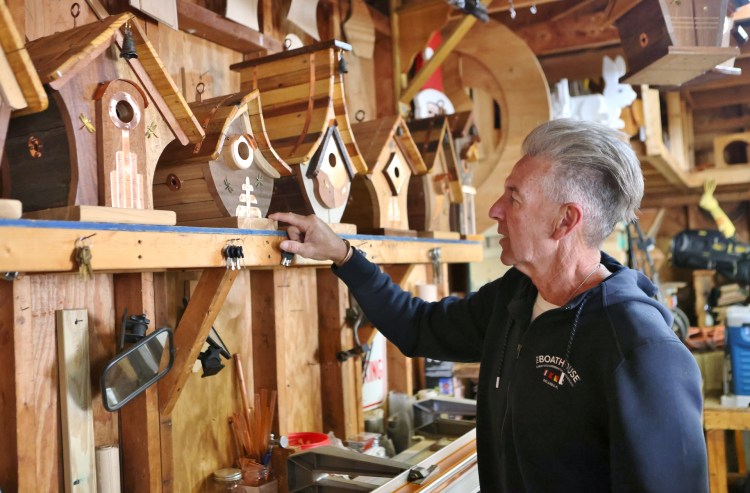
Method to the Mission
Reardon at 64 may not be exactly a spring chicken, but he isn’t slowing down much either, typically building 10 birdhouses at a time, using mostly cedar, mahogany, hickory and oak.
“I have all this wood from jobs that I did. And I have a lot of friends in the business. They call me,” he said of supply sources that lets him get free wood and sell cheaper than similar product on sites such as Pinterest. “I take down decks for free just to get the wood.”
He puts a high gloss finish that highlights the wood grain and lets the wood breathe, giving a tour of this kind of town of birdhouses. “That’s made out of cedar, palette wood on top, copper accents,” he said. “This is mahogany, that’s a church made out of cedar and this is a new style I came up with this year.”
They all have holes an inch and a half in diameter for small birds such as sparrows and finches. The Hobbit house, his first, remains his best seller complete with a tiny door that looks like a Hobbit might walk in.
“It has a cleanout, so you can open it up at the end of the year and get the new tenants,” he said, referring to birds the way any landlord would refer to those who live on their property.
Birdhouses are busiest, he said, from March to May, the peak of nesting season, although people buy birdhouses all year long.
“If you put a birdhouse out there, nothing would go in it. In April and May, they lay their eggs. They make a nest inside the birdhouse,” he said. “I have videos of birds going in there. It’s pretty amazing.”
Although he has a few white birdhouses, they are basically wood and he does not believe in painting which covers up the beauty of the wood. So you won’t find holiday colors, except for a wood reindeer’s red nose and Santa’s hat.
“Every one is different,” he said. “There aren’t two the same.”
As he walked through this garage workshop, he showed (maybe showed off, a little) a Santa with a red hat, wood rabbits, a wheelbarrow, swan and wood toolbox designed as planters, along with a bevy of birdhouses. The garage detached from the house, which they moved into in 1995, has been transformed by wood.
“There wasn’t a thing in it. I built this over 25 years,” he said. “This is my inventory, some of my supplies.”
He said he has sold hundreds of birdhouses, including around 80 over the past year with about 60 in his garage along with more in his trailer. He loads birdhouses and a set-up in his pickup truck to go to crafts shows, recently setting up nearly 40 at the Oyster Bay Festival.
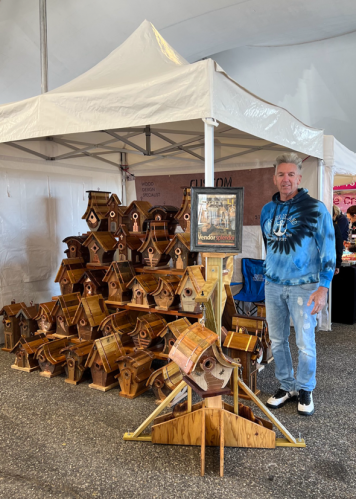
Where the birds are, “People ask, ‘How am I going to hang it in my tree?’” he said. “I’ll show you the bracket.”
He builds brackets that sell for $40 in addition to birdhouses that often sell for $200, or $175 for the smallest. He isn’t worried about demand.
“So many people love birds,” he said. “If you love birds, when you see these birdhouses, people buy them right up. There are a lot of nature lovers.”
One person bought three and someone recently bought one as a birthday gift for his father. Winter is busy, since it’s holiday or gift season. In addition to the 60 in this empty bird city, he points to future birdhouses.
“This is a stack of rough saw mahogany. I bought two skids for $1,000. Six birdhouses and it paid for itself,” he said. “I already used one and a half skids and I still have all of this left.”
He said that “these are the next birdhouses right here,” gesturing to cedar he got three months ago from a railing when an old deck was replaced.
“I just dropped off a birdhouse for him,” Reardon said. “Whoever gives me wood, I usually drop off a birdhouse once I’m done.” Safe Houses After a tour of his garage gallery, he walked around the property, past post-Halloween pumpkins on a beautiful day, showing a birdhouse high in a tree.
“You can’t keep it low, because of the squirrels,” he said. “You have to put it where they feel safe.”
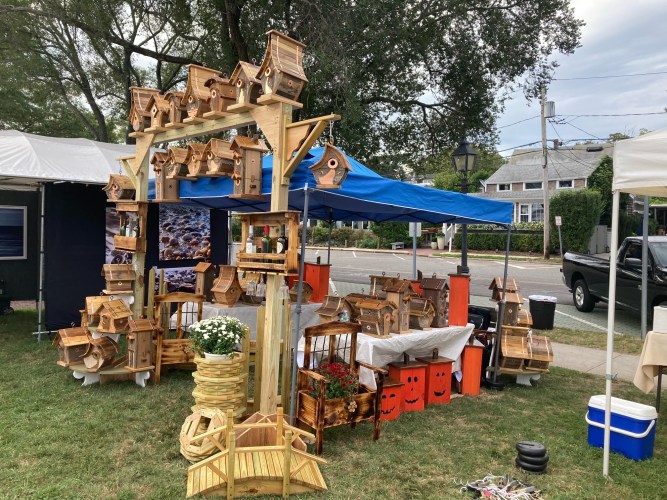
He said the first year he didn’t get any birds in one of his birdhouses, but now typically has tenants during high season. There even seems to be an avian housing shortage.
“They feel safe with that one on top. There’s copper on the front,” he said. “The squirrels can’t eat through the wood.”
He explained his birdhouses don’t have a peg, because birds sit and do their business, damaging the wood. “They hover over it and go in,” he said.
He sold five birdhouses last year just before Christmas and has enough wood to keep working so he won’t run out, including at least 30-year-old cedar from a deck he replaced.
“Water never penetrated the wood. The oil in the wood rejects it, so it lasts,” he said. “That’s why the cedar is unbelievable. You can’t buy this wood. You have to find it. And I’m lucky enough to have the talent to bring it to life.”
This article appeared inside Behind The Hedges Powered by the Long Island Press’ December 2024 issue. Read the full digital edition here. For more Master Craftsman columns, click here.


